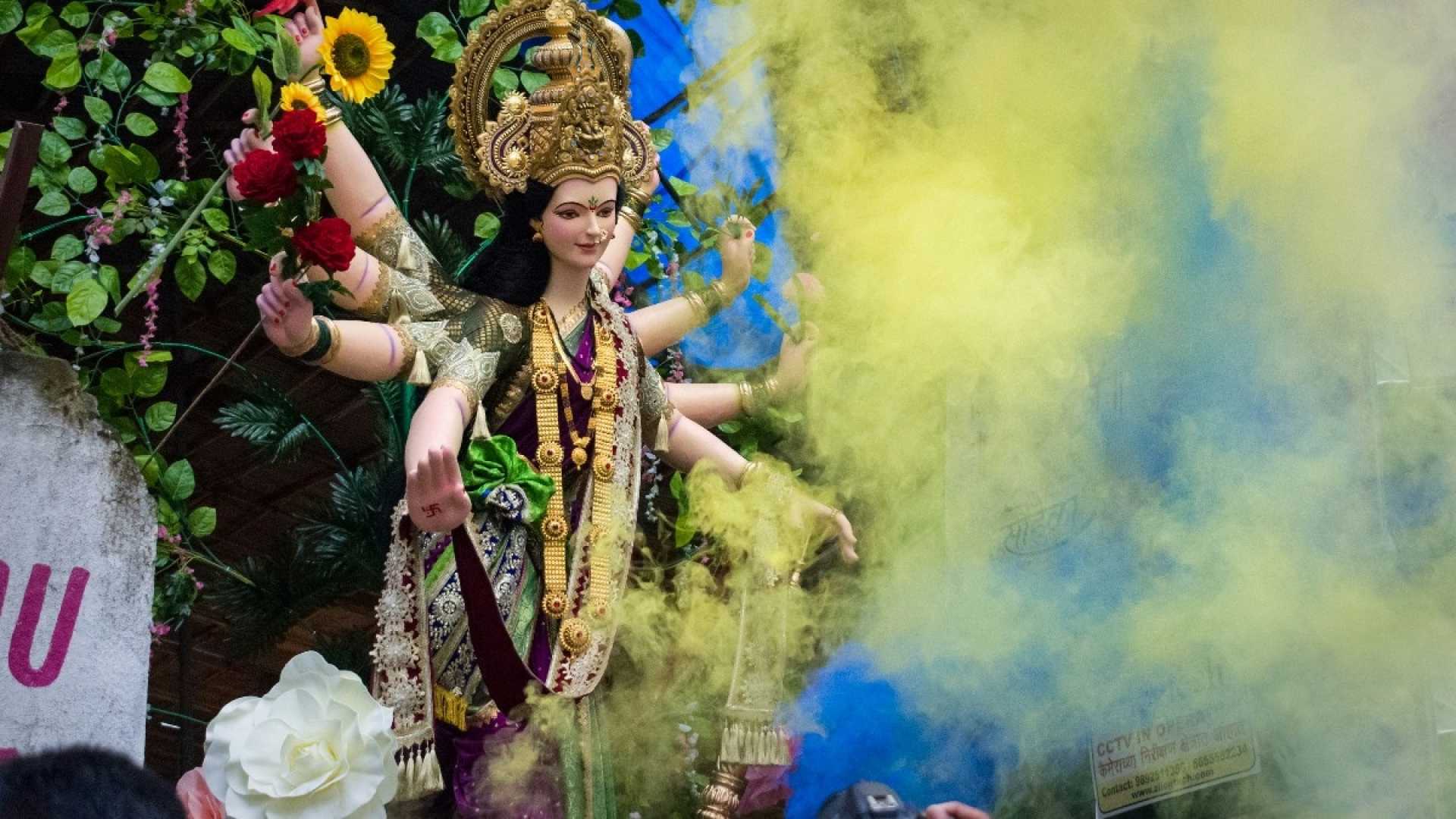News
Comprehensive Guide to Navratri 2024: Dates, Significance, and Rituals

Navratri, a vibrant and spiritually significant festival dedicated to Goddess Durga, is celebrated with immense devotion across India. The festival, symbolizing the victory of good over evil, is observed by millions who worship the nine forms of Goddess Durga. In 2024, Navratri will begin on Thursday, October 3, and conclude on Saturday, October 12. Each day is associated with a specific avatar of the goddess, marked by unique rituals, offerings, and colors.
On the first day of Navratri, the festival commences with Ghatasthapana, a significant ritual where a sacred pot, or kalash, is installed, symbolizing the presence of Goddess Durga. Devotees worship Goddess Shailputri, representing strength and wisdom, and wear yellow to symbolize joy and energy.
The second day is dedicated to Goddess Brahmacharini, the embodiment of love, devotion, and peace. Chandra Darshana is performed, marking the sighting of the moon, and the color green is worn, representing growth and renewal.
On the third day, devotees worship Goddess Chandraghanta, known for her bravery and warrior spirit. The Sindoor Tritiya ritual is performed, and grey, representing balance and calmness, is the color for the day.
The fourth day coincides with Vinayaka Chaturthi, during which devotees pray to Lord Ganesha. Goddess Kushmanda is worshipped, and orange, symbolizing enthusiasm and warmth, is worn.
The fifth day is dedicated to Goddess Kushmanda. The Upang Lalita Vrat is observed, and white is worn to symbolize purity and peace.
Goddess Skandamata is honored on the sixth day. Red, symbolizing passion and strength, is the auspicious color, representing motherly love and protection.
On the seventh day, Goddess Katyayani is invoked, revered as the goddess of power and courage. Royal blue, representing depth, wisdom, and stability, is the color of the day.
The eighth day, known as Durga Ashtami, is one of the most important days of the festival. Goddess Kalaratri, a fierce form of Durga, is worshipped to dispel darkness, and pink is worn, symbolizing love and affection.
The ninth day, Navami, concludes Navratri with the worship of Goddess Mahagauri, known for her purity. The Sandhi Puja is a key ritual, and purple, a symbol of spirituality and transformation, is worn.
Navratri holds great importance for Hindus and is a celebration of spirituality, helping in invoking the divine feminine energy of Goddess Durga. The festival is steeped in history and mythology, particularly the battle between Goddess Durga and the buffalo demon Mahishasura, emphasizing the triumph of good over evil.
Navratri is celebrated through various rituals and customs across India. Fasting and praying are common practices, helping in spiritual cleansing. In Gujarat, dance forms like Garba and Dandiya Raas add vibrancy and color, symbolizing life’s celebrations and communal bonding.
Durga Puja, particularly in West Bengal, highlights the cultural richness of the festival with decorated idols and cultural performances. Navratri is a celebration of spirituality, introspection, and personal growth, touching millions and forging understanding between spirituality, society, and personal development.












